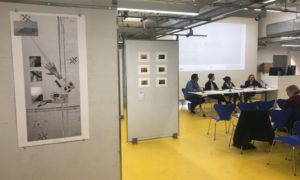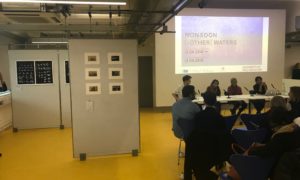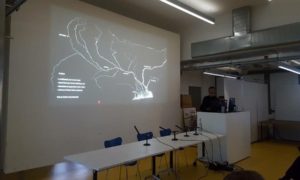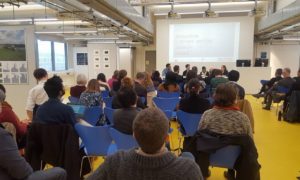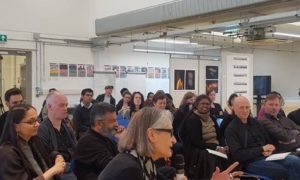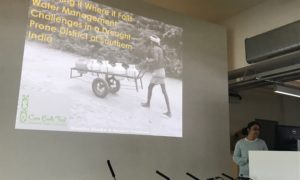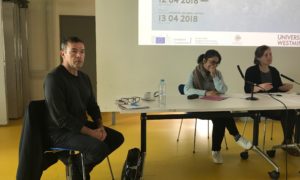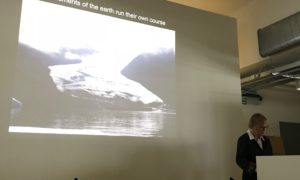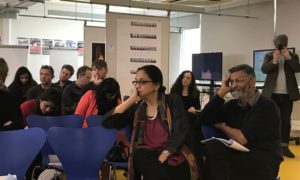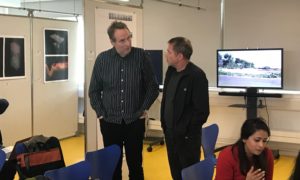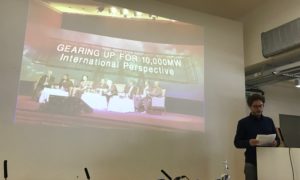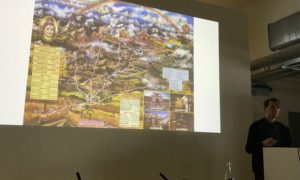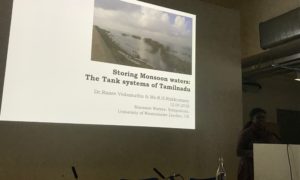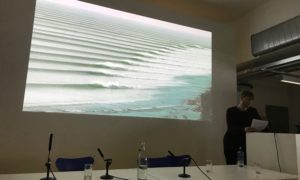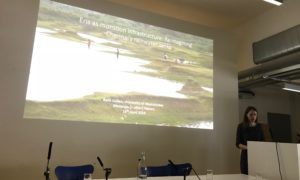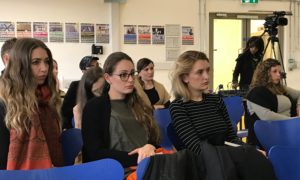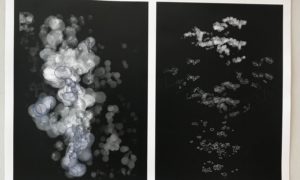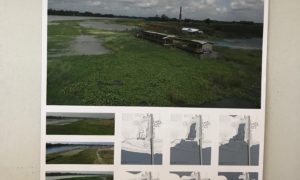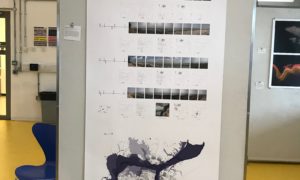Monsoon [+other] Waters, the second Monsoon Assemblages symposium in a series of three was convened by the Monsoon Assemblages project at the University of Westminster on the 12th and 13th of April 2018.
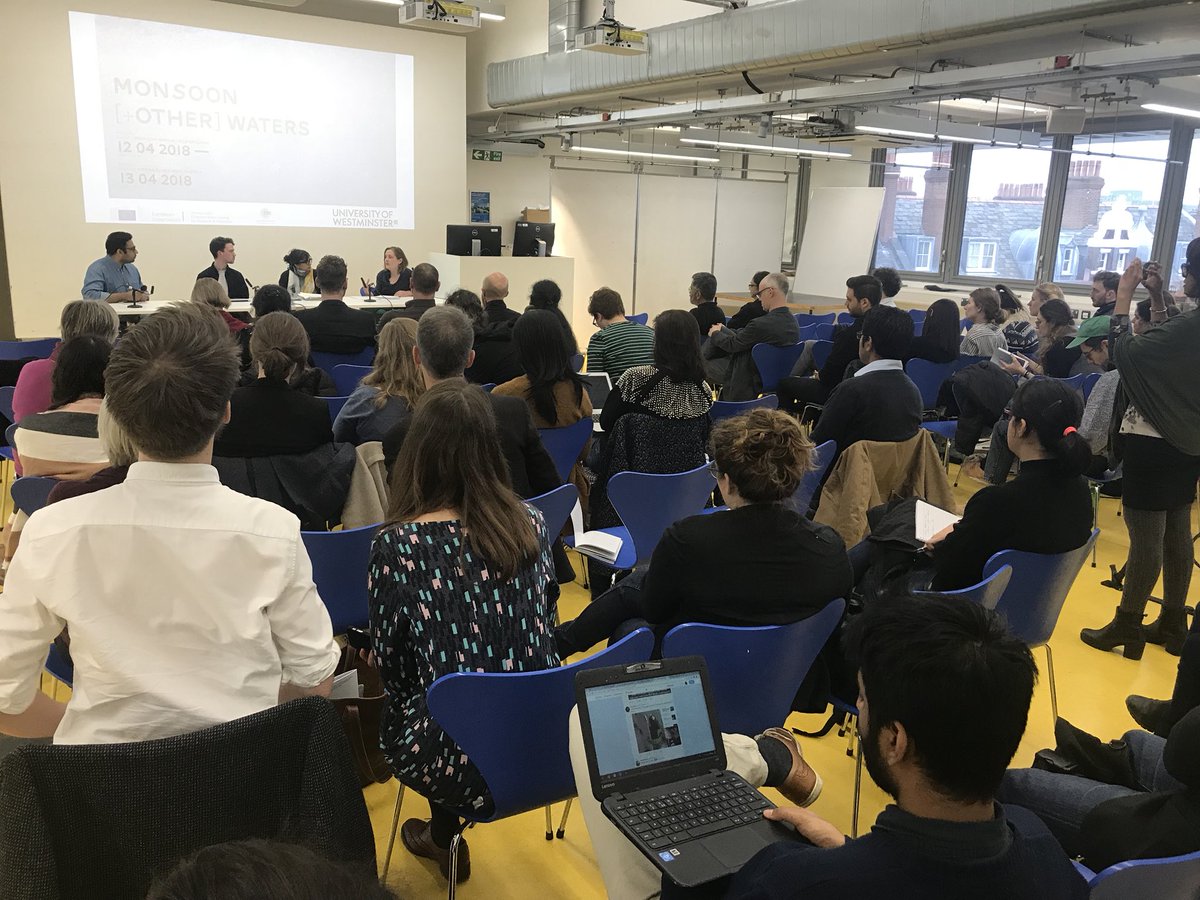
Photograph: Lindsay Bremner.
This year’s symposium comprised a number of inter-disciplinary panels, key-note addresses and an exhibition. It brought together established and young scholars and practitioners from a range of disciplines, knowledge systems and practices to engage in conversations about the ontologies, epistemologies, histories, politics, practices and spatialities of waters, monsoonal and beyond.
The symposium was introduced by Harry Charrington, Head of the Department of Architecture at Westminster University. It began with an interdisciplinary panel featuring PhD Candidate Ifor Duncan and anthropologists, Pamila Gupta and Jesse Ransley. Ifor Duncan opened the session by following the traces of human violence in the riverine spaces of the Amazon; Jesse Ransley discussed village life in the backwaters of Kerala and Pamila Gupta expanded sensorial notions of monsoon wetness through the practice of capturing its fragrance in a bottle. After coffee another interdisciplinary panel comprising anthropologist Megnaa Mehtta, geographer Pushpa Arabindoo and artist Laura Denning introduced us to the politics of embankment in the Sundarbans and of hydropolitics in Chennai, while Laura Denning screened a short film on the changing landscape of the Somerset levels and the Avalon Marshes in the UK.
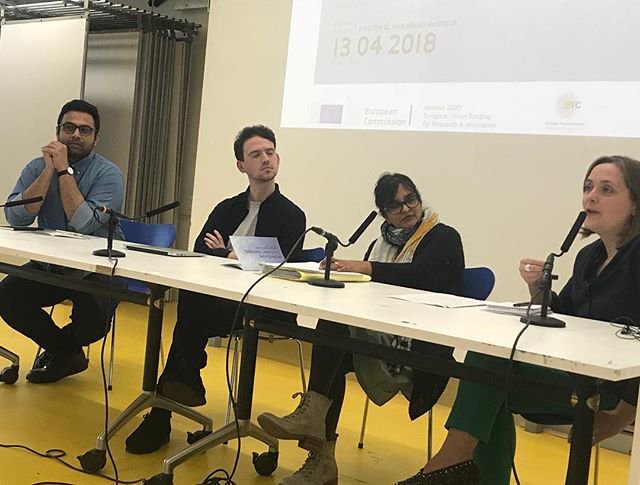
Harshavardhan Bhat (Chair), Ifor Duncan, Pamila Gupta, Jesse Ransley. Photograph: Lindsay Bremner.
This was followed by an inspiring keynote lecture by landscape architects Dilip Da Cunha and Anuradha Mathur titled ‘Oceans of Rain,’ which challenged the idea of India as a land of rivers and replaced it with the idea of ‘oceans of rain’ and explored wetness as a way of understanding the world. The lecture was accompanied by da Cunha and Mathur’s drawings, which challenge cartographic and political representations of the world that delineate ocean from land.
Day two of the symposium began with a panel on water-as-risk in Mumbai (Theresa Zimmerman), Chennai (Laura Verdelli) and the Ramanathapuram district of Tamil Nadu (Avantika Bhaskar). This was followed by the second keynote address of the symposium by anthropologist Kirsten Hastrup, who took us to Arctic North-West Greenland, to help us think through the interface between natural and social histories with an account of long-term fieldwork undertaken during and after her ERC-funded Waterworlds project. She emphasised how precarity, turbulence, and indeterminacy, are forces which, far from being anomalies disturbing an imagined constant of life, are what enables life, and lives, to happen.
This was followed by two panels, the first of which told stories of waters wrested into industrial and other forms of utility: Matthäus Rest discussed the Nepalese government’s hydroelectric programme, Anthony Acciavatti presented over a decade of fieldwork to uncover the material, social and industrial operations of the Ganga River and R.H. Rukkumany discussed hew work on the Tank systems of Tamil Nadu. The symposium closed with an immersion into the waters of man-made wave pools (David Whyte), saw sudden streams appear in a Sussex village (Mary Geary), and Monsoon Assemblages research fellow, Beth Cullen concluded with her work on the changing status of Chennai’s tanks.
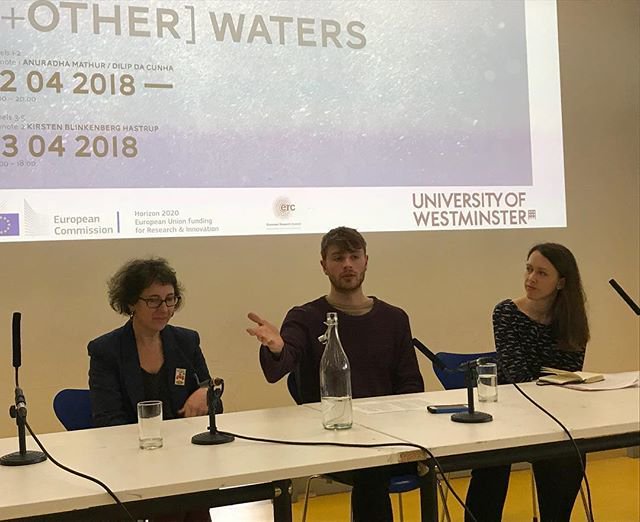
Mary Gearey, David Whyte and Beth Cullen. Photograph: Lindsay Bremner.
The drinks reception gave attendees a final chance to view the accompanying exhibition, which featured work contributed by speakers, as well as current and former students of DS18 at the University of Westminster (Constantina Avraamides, Sarah Bass, Charlotte Birch, Georgia Trower, Laura Nica), and architects and designers from the UK, India, Bangladesh, and North America (Vrinda Seksaria + David Kendall, Saif Ul Haque and Nikole Bouchard).
Thank you for organising a wonderful informative event, I enjoyed taking part and look forward to the publication (David Kendall, Visiting Research Fellow | CUCR, Goldsmiths, University of London).
Great symposium and I regret even more now missing the first one (Pushpa Arabindoo, Senior Lecturer in Geography & Urban Design, Department of Geography, University College London).
I very much appreciated the invitation to share my work and the conversations I had with you and other members of the symposium. I hope we stay in touch as I think the work you are doing with Monsoon Assemblages is by far the best work I’ve seen on the subject—and much needed! (Anthony Acciavatti, Adjunct Professor, Columbia University in the City of New York).
Really a treat to have so many people in one place thinking about the monsoons as a starting point of discourse and research! (Anuradha Mathur Professor, Landscape Architecture Department, School of Design, University of Pennsylvania).
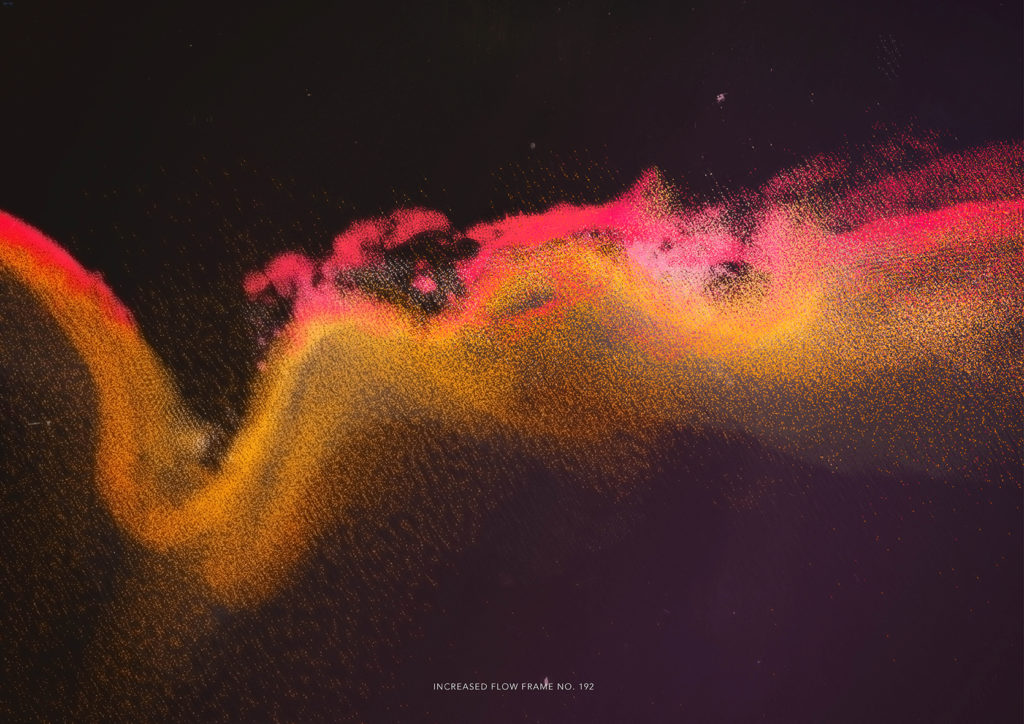
Image: Sarah Bass
The full symposium programme, including abstracts is available here.
Videos of other presentations are posted on the Monsoon Assemblages YouTube channel.
The organisers of the event will be producing an edited publication of the proceedings of Monsoon [+ other] Waters by the end of 2018.

